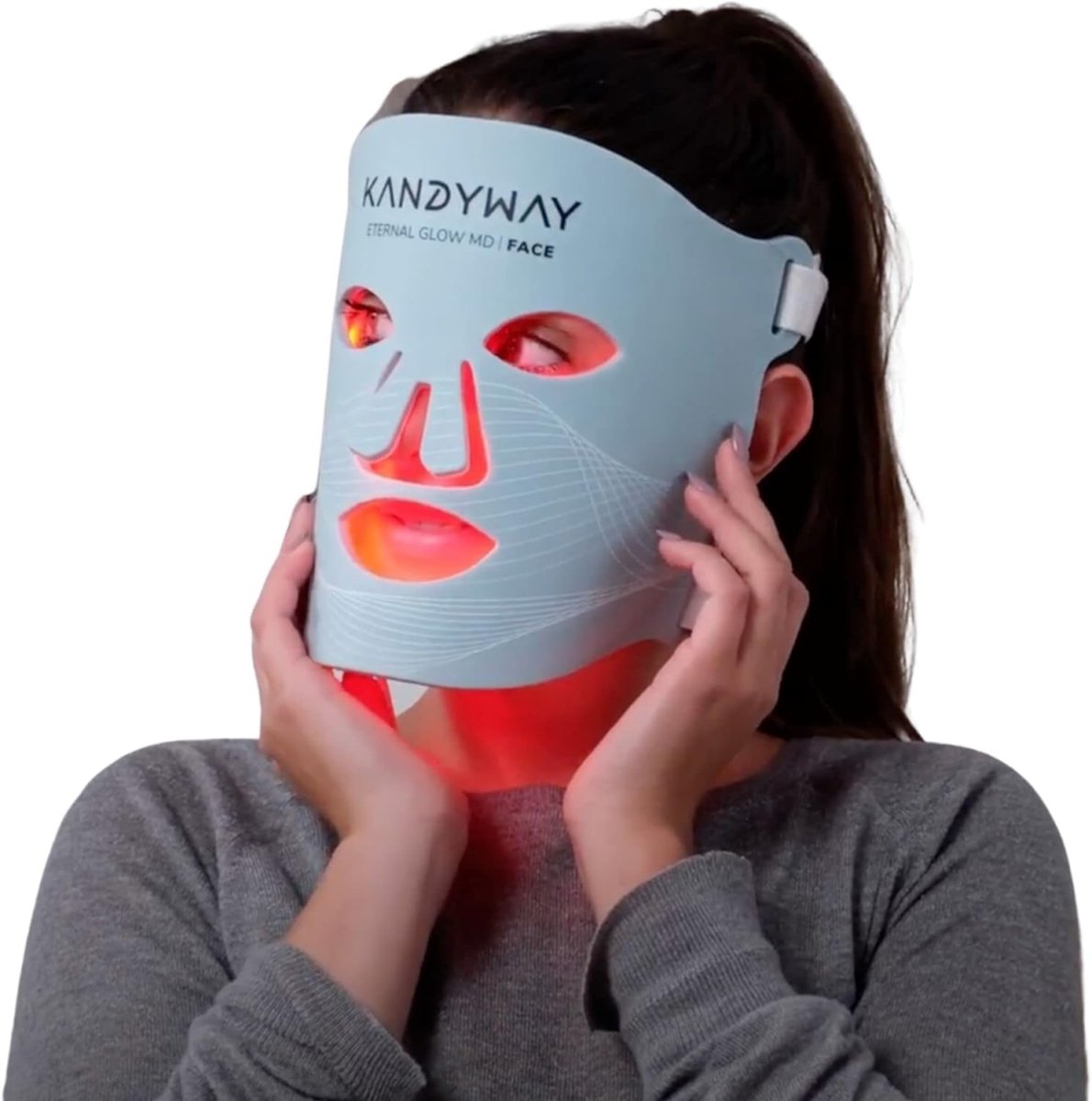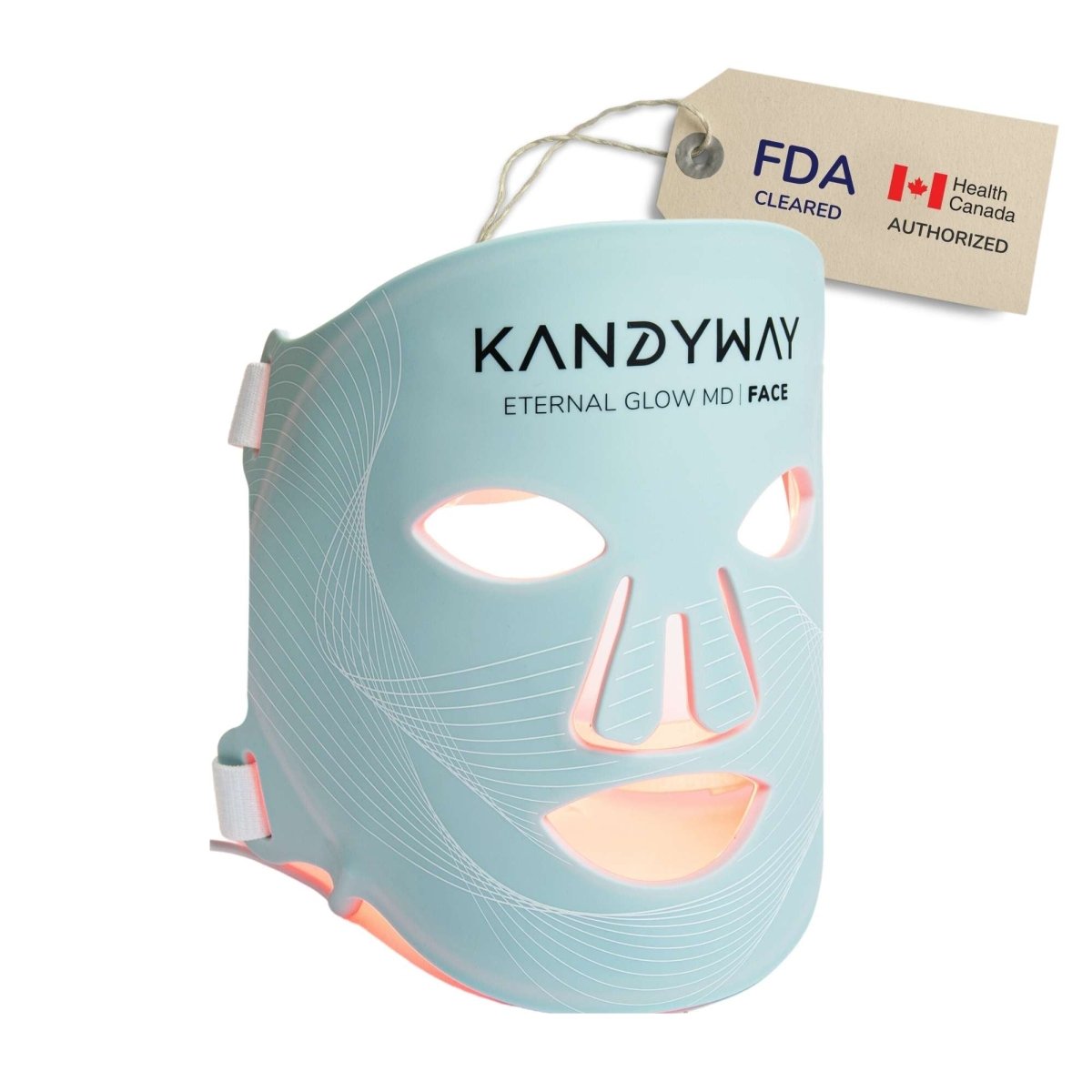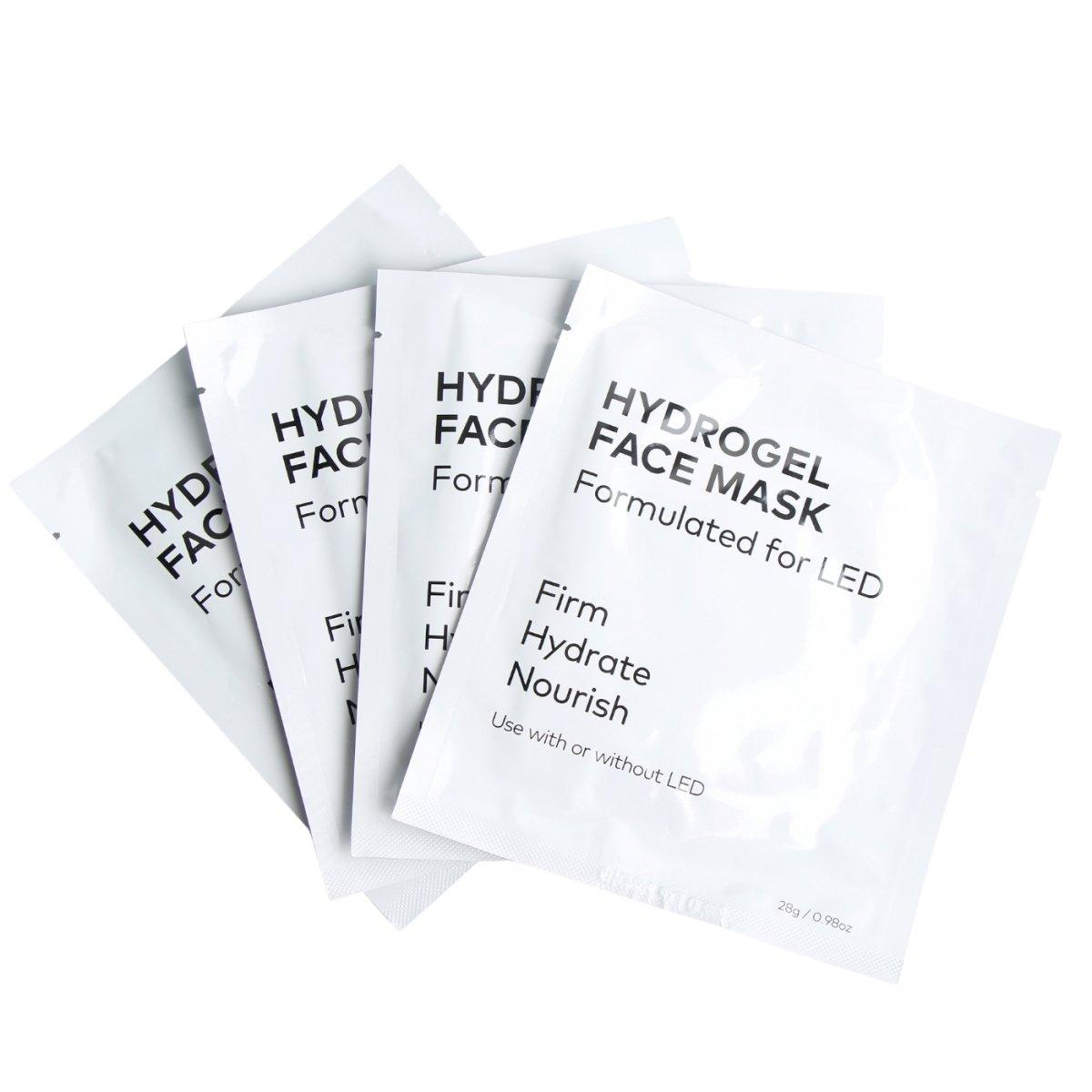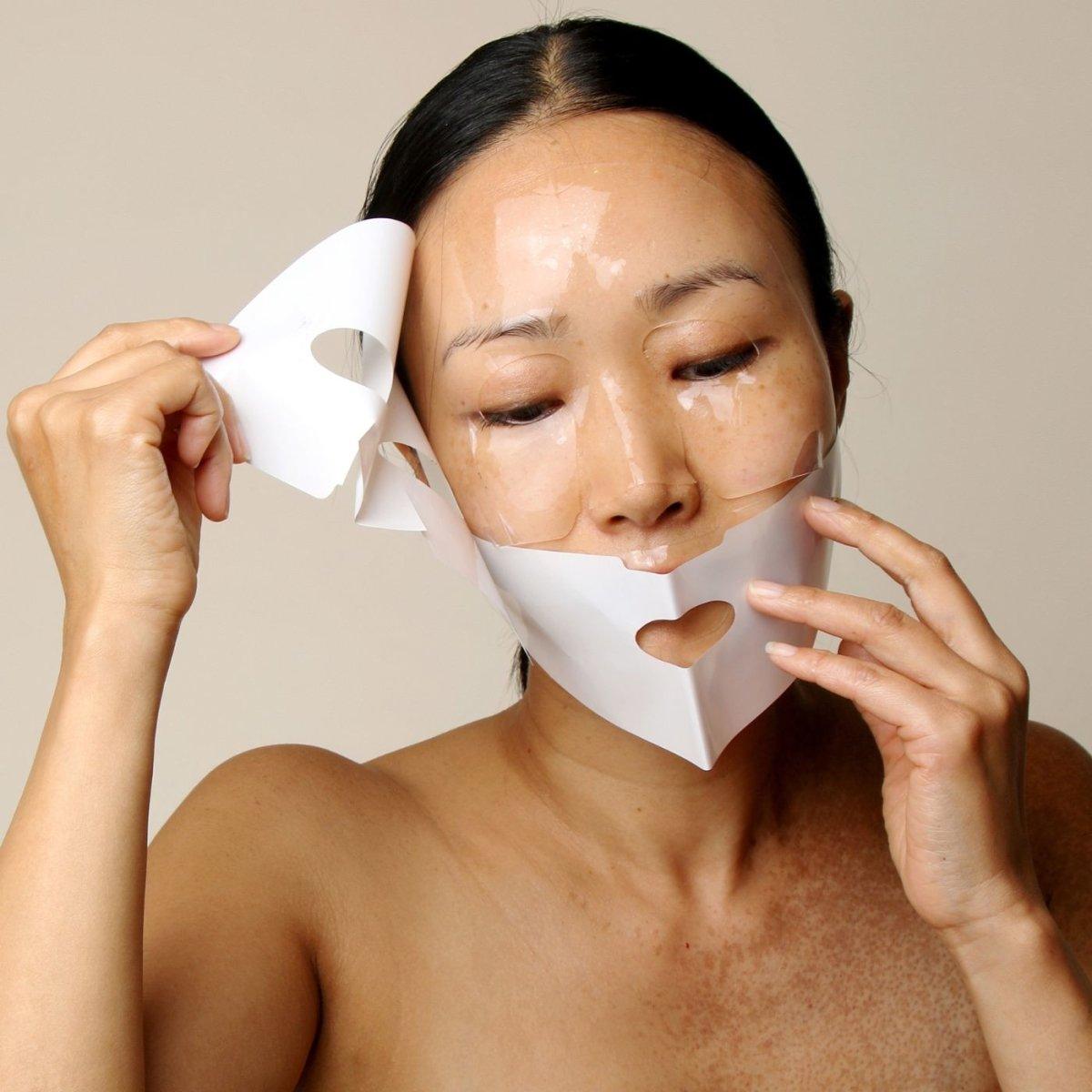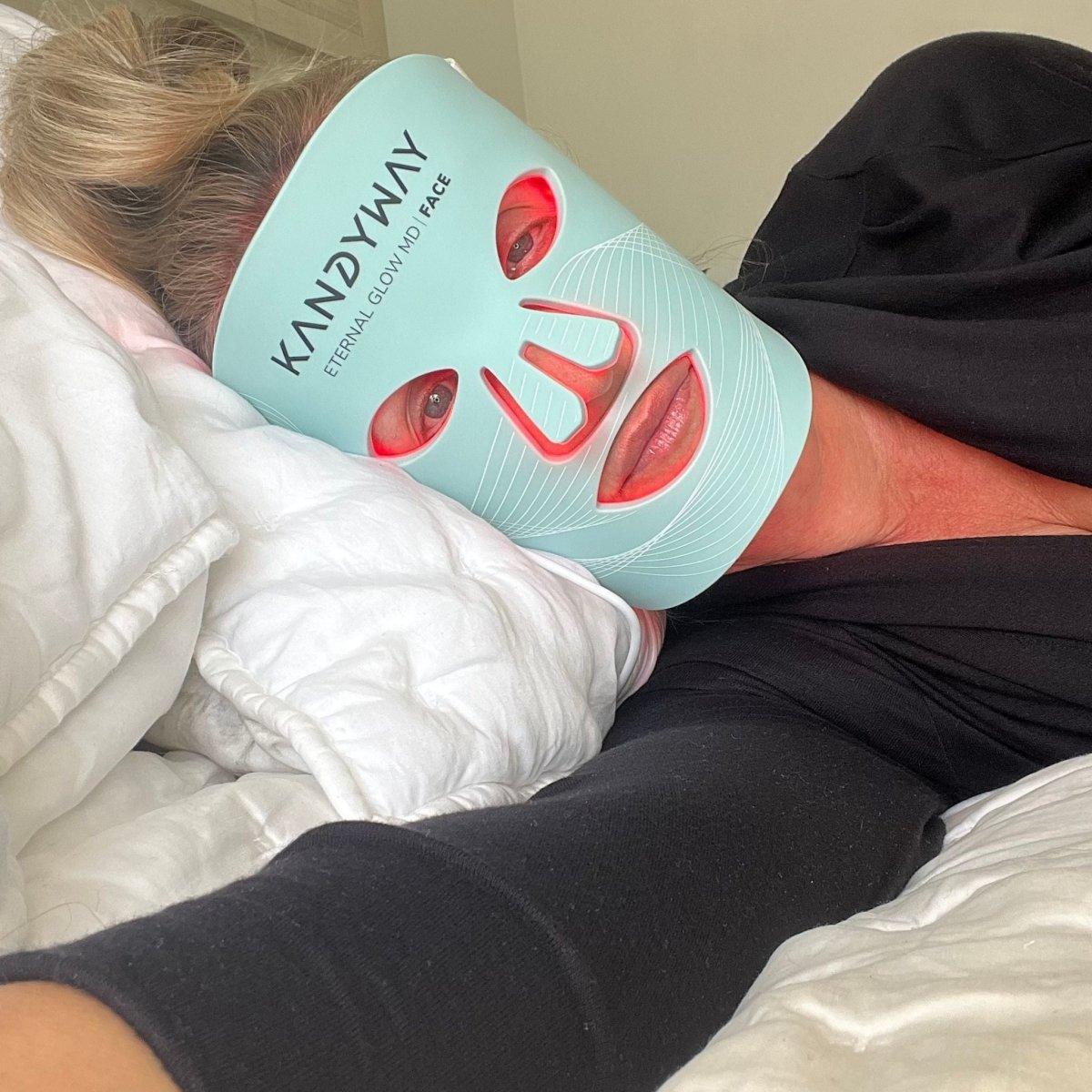Introduction: Not All Red Light Therapy Masks Are Created Equal
Red light therapy masks have exploded in popularity, but not all are created equal. Many fail to deliver real results because they use ineffective wavelengths, low power, or poor designs. Some brands cut corners by using cheaper, less studied light wavelengths, while others overpower their devices to make them sound more impressive. The fact is for light to have a therapeutic effect on our skin in needs to be at the exact right specs for the right amount of time to provide the optimal dosage of light.
If you’re serious about skin rejuvenation, collagen production, and anti-aging, here are the six essential features to look for in a high-quality and effective anti-aging red light therapy mask.
1. Scientifically Proven Wavelengths: 633nm & 830nm
The most researched and effective wavelengths for skin rejuvenation are 633nm red light and 830nm near-infrared (NIR) light.
- 633nm Red Light: Stimulates collagen and elastin production, reducing wrinkles and improving skin texture.
- 830nm Near-Infrared Light: Penetrates deeper to boost circulation, reduce inflammation, and accelerate skin repair.
Many brands cut costs by using less studied red and near-infrared wavelengths, but 633nm and 830nm are the gold standards backed by decades of clinical research. If a mask doesn’t disclose its exact wavelengths, be cautious—it’s likely using ineffective alternatives.
2. Optimal Irradiance: 35mW/cm² for Maximum Results
Irradiance (power density) determines how much energy actually reaches your skin.
- Too low (<15mW/cm²): Won’t penetrate deeply enough to stimulate real skin benefits.
- Too high (>70mW/cm²): Can cause overheating, leading to skin irritation or heat induced melasma.
- Ideal (35mW/cm²): Scientifically backed for safe, effective light absorption.
Some brands avoid listing irradiance because their masks are too weak to work. Others overhype power to mislead buyers into thinking more powerful is better—like trying to cook a turkey at 800°F instead of 350°F. The outside burns, but the inside doesn’t cook properly. In the same way, too much irradiance creates unnecessary heat instead of delivering the right therapeutic dose.
Always check irradiance levels before purchasing.
3. Avoid Blue Light in an Anti-Aging Mask
Many brands add blue, green, or yellow light to their masks to make them seem more advanced, but these wavelengths have little to no clinical evidence for anti-aging. More colors do not mean better results.
- Blue Light (415nm): Commonly used in acne treatments to target bacteria, but it also increases oxidative stress, which can accelerate skin aging and cause hyperpigmentation, especially in darker skin tones..
- Green & Yellow Light: There is currently not enough scientific research to justify their inclusion in anti-aging masks, as they belong to the shorter wavelength range with limited skin penetration.
Consider it a huge red flag if any brand adds blue light in an anti-aging mask as they are potentially harming customers that don't know the downsides of blue light.
Blue light has its place in only acne-specific masks, but including it in an anti-aging device is misleading and potentially harmful as it can even cause premature aging of the skin.Users who are unaware of its effects may overuse it, increasing their risk of skin damage. Anti-aging masks should focus solely on red and near-infrared light, which have been proven safe and effective.
If you need blue light, it's best to use a separate acne-specific mask. If you’re unsure about its risks, take a look at reviews for masks that include blue light—you’ll often find complaints from users who experienced dark spots or melasma. The issue isn’t the mask itself, but rather that users unknowingly exposed their skin to blue light without understanding the potential consequences.
4. Flexible Silicone Design for Full Skin Coverage
A red light therapy mask is only as effective as its fit.
- Flexible silicone masks conform to your face, ensuring maximum coverage.
- Closer to the skin is much more effective then lights further away from from the skin. It is estimated that 60% of the light can be lost by reflecting off the skin if the device is 6 inches away.
- Hard-shell masks leave gaps, reducing light penetration and effectiveness.
A mask with a comfortable, flexible fit delivers consistent results and even exposure to every treated area.
5. Medical-Grade Certification for Safety & Efficacy
Many brands claim their masks are “medical grade” without the necessary certifications to back it up. Here’s what to look for:
- FDA 510(k) Cleared – Proven for safety and effectiveness.
- Health Canada Authorized – Approved as a Class II medical device.
- CE Certified – Meets European safety standards.
If a mask lacks some of of these key certifications, there’s no guarantee studies have been done to prove it’s safe or effective.
Some of the trigger words that should raise red flags are “FDA registered, FDA approved, Heatlh Canada approved. If brands are using these words they are clearly not credible or don't actually have the certifications and just want to appear like they have. The only 2 legal words that we can use as a brand are FDA-Cleared and Health Canada Authorized as these are clear rules given out by the regulatory bodies
6. Strong Warranty & Return Policy
A high-quality LED mask should last for years, but many brands cut corners on durability.
- Two-Year Warranty: Protects against malfunctions.
- 30-Day Return Policy: Lets you test the mask risk-free for a full refund
- Avoid No-Return Policies: Some brands claim “30-day guarantee” on their homepage but hide in fine print that LED masks are non-returnable one box is open. We know many brands in both Canada and U.S like this which is unacceptable to the consumer.
Conclusion: The Key to an Effective LED Mask
When it comes to red light therapy, effectiveness is all about precision. A mask must have the right irradiance, the correct wavelengths, and the proper treatment time to deliver the optimal dosage of light for skin rejuvenation.
If any one of these factors is off—whether it's too little power, the wrong wavelengths, or an incorrect usage time—the results will be compromised. But when they align, you have a scientifically backed, highly effective LED mask that can visibly improve your skin, boost collagen production, and reduce signs of aging.
Before you invest in a red light therapy mask, ensure these elements are met. This is the difference between a gimmick and a truly effective skincare tool.
Sources
- Red 633nm and Near Infared 830nm for Anti-Aging - Science Direct
- Effects of Blue Light on Skin - Karger
- What is a Class 2 Medical Device - Health Canada
- What is an FDA Cleared 510K Medical Device





